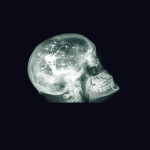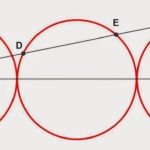I am guilty of having been a conceptualist for most of my life. I believed that the patterns and relationships we see in the world are actually part of our own minds—they exist only as abstract concepts. My favorite illustration of this idea is constellations. To the conceptualist, constellations would not exist without minds, though the individual stars that compose them would. The universal principle is that parts get unified into wholes by concepts. Simple substances are glued together into pluralities in our mind, but they are not glued together in the world.
I now believe that conceptualism is false. The world outside our mind is actually glued together; relations are mind-independent; and patterns are objectively real.
The famous Ship of Theseus is a great thought experiment that helps us generate the right intuitions. Imagine the ship is deconstructed, plank by plank, until every piece of wood has been replaced. The ancient philosophical question is asked, “Does it remain the same ship?”
This question touches on important issues in the philosophy of mind, language, and metaphysics. I want to use it to illustrate the differences between concepts and structure. To think clearly about the ship, it’s helpful to slice it into three pieces:
- The atoms which compose the ship
- Our concepts about the ship
- The abstract form (the pattern) of the ship*
(1) The atoms are easiest to understand. There are a bunch of individual atoms and molecules which compose the ship. As the planks get removed and replaced, the atoms themselves get removed and replaced. If we say, “The ship is identical to its atoms,” then the ship obviously changes when the atoms change.
(2) We have ideas about ships. We have our own conceptual criteria for determining whether we label something as a “ship” or “not a ship.” Within this conceptual criteria, we find a complex set of different ideas—notions about shape, buoyancy, purpose, etc—that have to be bundled together in the same object. A life jacket, for example, is buoyant and intended to float, but it isn’t the right shape to be called a “ship.”
(3) I claim that the form of the ship stands apart from its atoms or our concepts. The atoms stand in a particular geometric relationship with each other. They are arranged a particular way. There is a pattern of atoms, and even if the atoms are replaced, the pattern remains the same. Regardless of our personal linguistic habits or conceptual criteria, the pattern remains the same.
Finding Clarity
These three concepts are powerful enough to think clearly about the Ship of Theseus. As the planks are replaced, whether the ship changes or not depends on what we’re focusing on. Consider three possible perspectives here:
1 Atomism / Nominalism
Atomists are the most extreme of the materialists, claiming that the universe is entirely composed of atoms and the void. In this view, the Ship of Theseus does not exist over and above the atoms; the “ship” is really just a way of talking about atoms. It’s just a name, with no corresponding or underlying pattern.
More generally, composite objects cannot really exist, as their atoms are constantly in flux—by merely blowing on the ship, the atoms move and shift.
2 Conceptualism
The conceptualists add more stuff to the picture. They want to connect the atoms somehow. They want to recognize a pattern, in addition to the atoms. But this pattern is mental or conceptual, not physical. What turns “a bunch of atoms” into “a ship” is our own abstract conceptual criteria, and without minds, “ships” do not really exist.
The conceptualist has a good explanation for why The Ship persists over time, even if the atoms change. Ship-ness is about our own mental classification scheme, not about particular atoms. This classification scheme can even vary between individuals. We might disagree about whether [Object X] qualifies as a “ship” because of the ambiguities in our own concepts, not because of ambiguities in the physical world.
3 Realism / Platonism
The realist adds even more stuff. In addition to the atoms and the concepts, there is also a mind-independent structure “out there” in the world. The atoms really are glued together; the relationships between the atoms exist outside of our minds.
The realist has a good explanation for the behavior of the ship. For example, why don’t ships disintegrate when placed into water? What makes the atoms cohere?
If all that exists are individual atoms, then it’s not clear why the behavior of atoms is so coordinated. Atoms do not appear to be isolated from each other; they are connected in the world. Even if our minds disappear, atoms still behave relative to other atoms—meaning, their relationships are mind-independent.
The geometry of the ship is also objective. The atoms stand in a particular spatial relationship with each other, regardless of our concepts. The form/arrangement really is “out there.”
The realist has an excellent explanation for the persistence of The Ship. There is some objective, abstract pattern of a ship, and even if the atoms change along with the planks, the form remains the same. The structural pattern is not physical, yet it is mind-independent.
To (most) realists, we humans do have our own conceptual criteria and classification schemes. Patterns do exist in the mind, but sometimes, the patterns in our mind correspond to patterns in the world. Sometimes, the abstract forms in our mind match the abstract forms in the world. In fact, when we have “true beliefs”, it means our mental structures are mirroring real-world structures.
This is not meant as a rigorous defense of realism, rather it’s just a helpful way to understand the argument. A longer defense can be read here.


